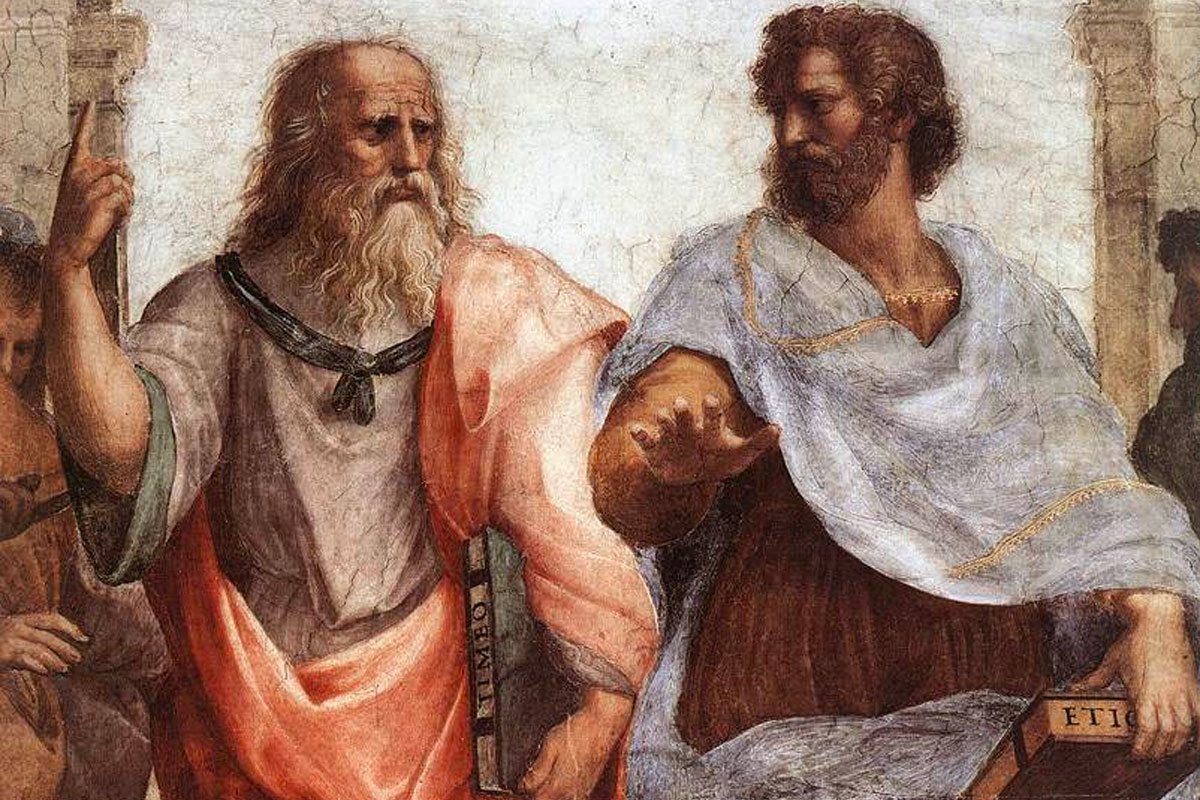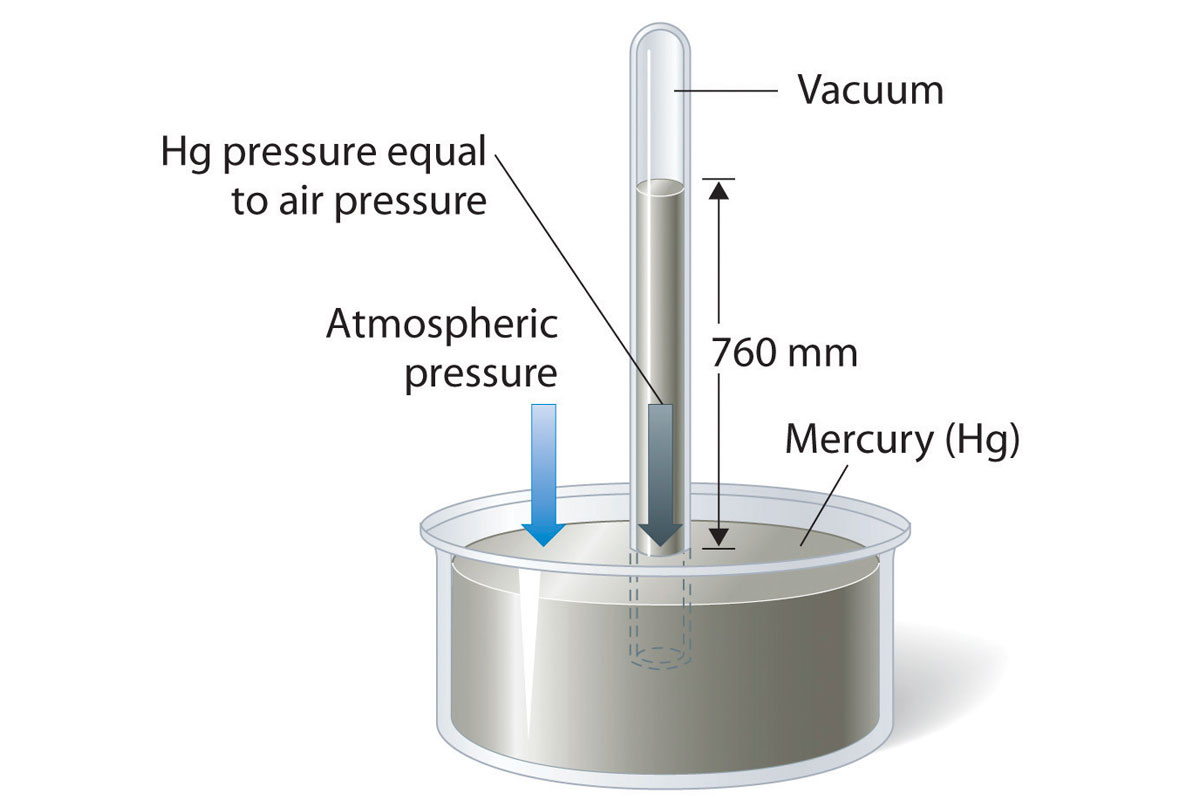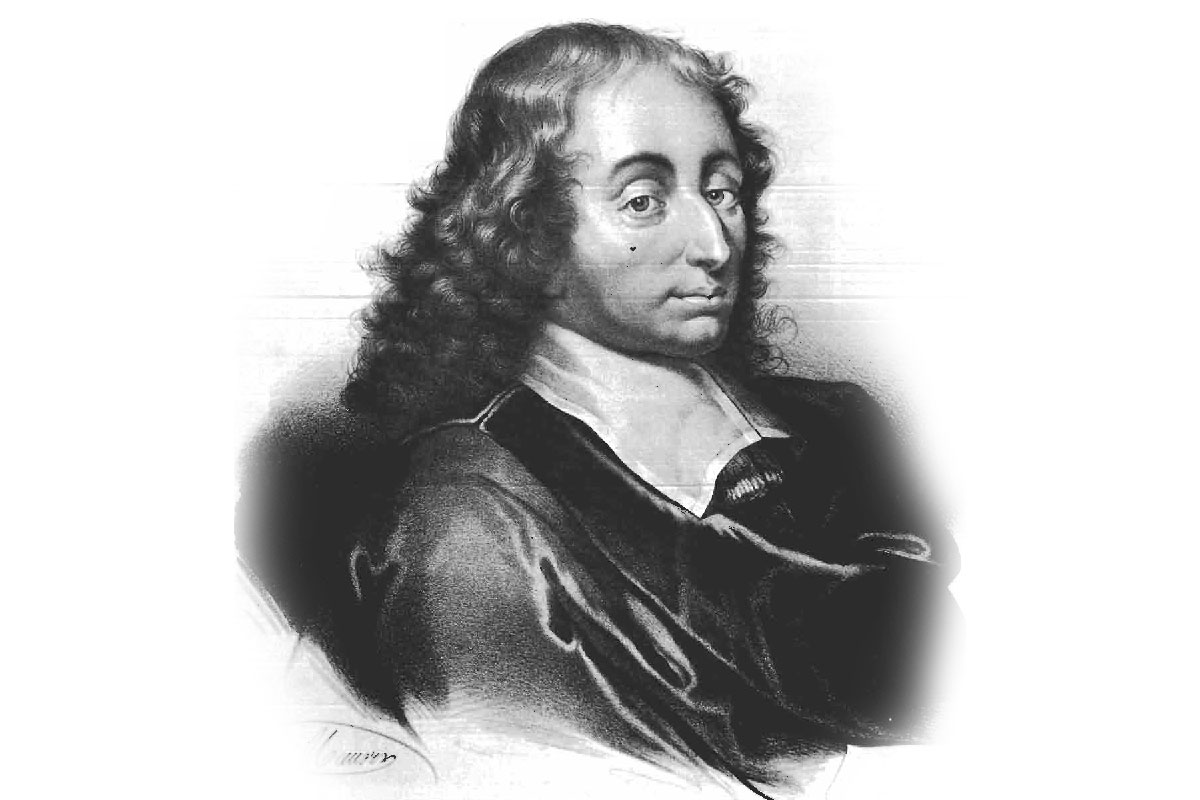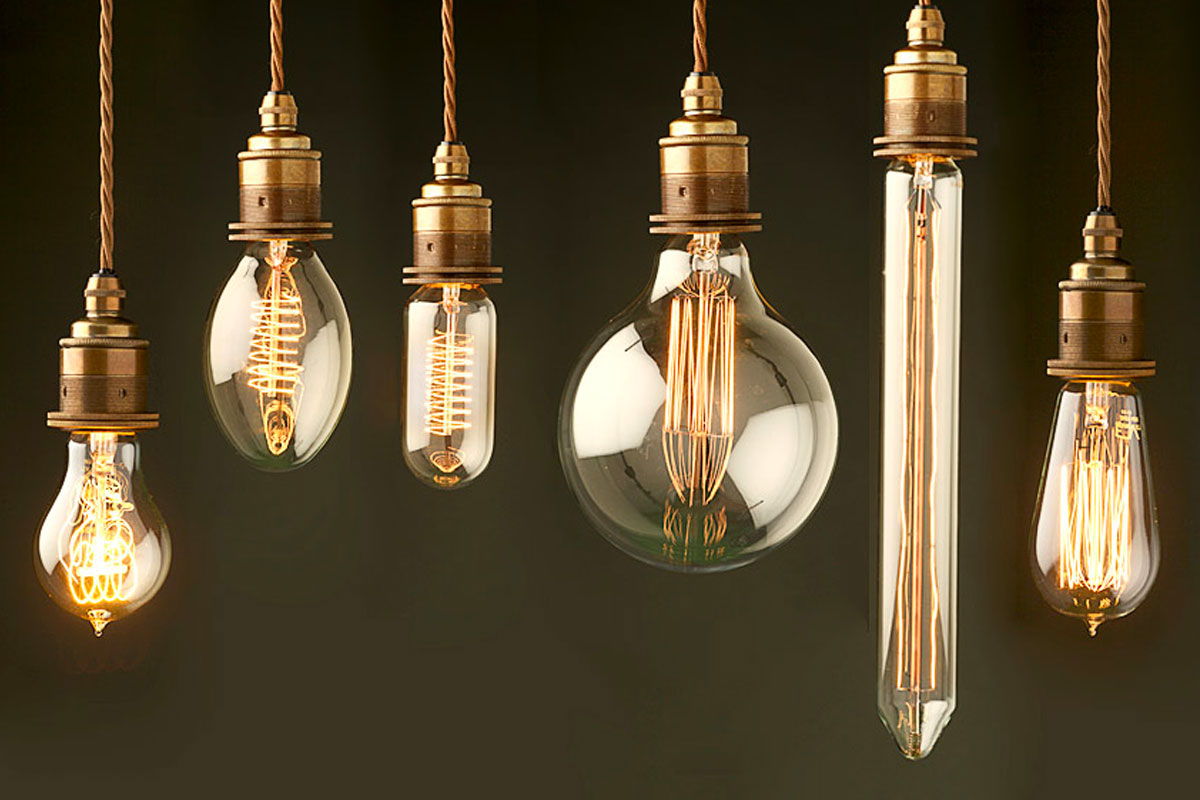The word “vacuum” traces back to the Latin word “vacuus” meaning empty. The first theory that empty space could exist began in ancient Greece with the philosopher Democritus. He is thought to have lived between 460 to 375 BC and proposed the theory that our world and everything in it is made up of tiny, indivisible particles. With this theory, he created the first version of atomic theory.
Democritus called these imaginary particles ‘atomos’. Atomos in ancient Greek referred to an object being indivisible and Democritus’ theory was that the space between his proposed particles was empty, utterly devoid of all matter. This concept of a space free of atoms is what we refer to in modern physics as a vacuum.
Incredibly, it wasn’t until millennia later that Democritus’ theory was proven correct and is still the accepted theory today. We call his proposed particles atoms, and they make up our whole world, indeed our entire universe.
Aristotle’s rebuttal of vacuum theory
Not everyone agreed with Democritus’ theory though. One of the leading detractors was the Greek philosopher and scientist, Aristotle.
Aristotle was born in 384 BC, and possessed one of the ancient world’s greatest intellects. His thoughts on science dominated many in the scientific community until the 16th century.
Aristotle refused to accept the existence of a vacuum. The theory of a vacuum conflicted with his argument that the Universe was comprised of countless individual particles. Aristotle proposed that everything we could see was made up of the four essential elements – water, earth, air, and fire. He did not consider that these elements could allow for a vacuum.

Plato (left) and Aristotle in an extract from Raphael’s 1509 fresco, The School of Athens. Aristotle (384 – 322 BC) argued against the existence of a vacuum technology and was later proved wrong.
The Catholic church and vacuum theory
In the 15th century, a well known saying, ‘Nature abhors a vacuum’, was a defence of Aristotle’s argument against a vacuum. It was very dangerous to oppose this view as it was held to be true by the Catholic church. To disagree with the church was to commit heresy.
The Italian scientist Giordano Bruno was born in 1548 and his views, that agreed with the concept of a vacuum, cost him his life. In February 1600, a Roman inquisition found Bruno guilty of heresy and he was tied to a stake and burnt to death.
Scientific progress on the subject of vacuum continued and by the 1600s the possibility or impossibility of a vacuum was a concept that caused violent disagreement within the scientific and philosophical community.
Proving vacuum theory
In 1613, the well-known scientist Galileo Galilei (1564-1642) postulated the theory that air might have weight. He went on to design experiments that proved air had both density and weight.
This new knowledge suggested that if a volume of air had weight, then we could undoubtedly devise a way to remove it from a given space. Galileo’s experimental proofs had made the air around us a tangible thing for the first time in history.
The Italian physicist Gasparo Berti is thought to have been the first person to devise an experiment to produce a vacuum. He is believed to have created a vacuum around 1641 using various pipes, bells and a bucket of water. However, the system was too simple to confirm the creation of a vacuum.
In 1644, Evangelista Torricelli, a pupil of Galileo, took up the problem. After studying the experiment by Berti, he devised an experiment of his own. He and Galileo were working on a practical problem brought to them by water well diggers. The diggers found that they could only pump water up to a maximum height of 10 metres with a suction pump. Above this maximum, the water would separate from the plunger in the pump. The gap above the plunger was possibly thought to be a vacuum.
The discovery of a vacuum
Torricelli reduced the experiment to laboratory scale, using a simple glass tube about a meter long which he sealed at one end. Torricelli then filled the glass tube with mercury and covered the other end, before inverting it over a bowl of mercury.
Once Torricelli got the tube in the correct position, he uncovered the end of the tube sitting in the mercury. He observed that the column of mercury in the glass tube fell to around 76 centimetres above the level surface of the mercury in the bowl.
Torricelli surmised that the space above the mercury column inside the tube was a vacuum. The void above the mercury contained nothing, and it was the first time that a stable and predicted vacuum had been created in a laboratory. The experiment is now referred to as the Torricelli experiment.

The experiment by Evangelista Torricelli that first proved the existence of a vacuum – inverting a glass tube of mercury over a basin of the liquid metal.
The experiment became recognised as being one of the most famous experiments in natural science. It is incredible to think that it took nearly 2000 years of scientific progress to produce the vacuum that had been predicted by Democritus.
Torricelli later confirmed by using longer glass tubes, that the level of mercury would always be independent of the volume above, and the longer glass tubes became known as Torricellian tubes. However, due to the dangerous times he lived in, Torricelli was too terrified to reveal his results.
Further experiments in vacuum theory
In 1646, the French scientist Blaise Pascal repeated the Torricelli experiment on liquids. Pascal’s findings led to the understanding that the maximum height was inversely proportional to the density of the liquid used. Pascal’s work led to the concept of air pressure.

French scientist Blaise Pascal (1623-1662). His experiments into the existence of a vacuum produced findings that lay the foundation for hydrodynamics.
Around 1650, the German scientist and politician, Otto von Guericke (1602 – 1686), was considered to be one of the leading ‘vacuists’ of the age. A vacuist was a person that believed creating a vacuum was possible.
Von Guericke managed to create a vacuum in a specially constructed sphere. After pumping out the atmosphere in the sphere and leaving the sphere untouched for several days, Von Guericke was surprised to find air had somehow started seeping back into the sphere.
His investigation into the problem concluded that air was mainly seeping in through the seals in the pump and piston.
To address this issue, Von Guericke constructed a new vacuum pump. He sealed the interior parts with water and this brilliant idea is still used to this day, but using oil instead of water.
Christiaan Huygens (1629-1695) experimented with the newly proved vacuum. Huygens showed that the free-fall speed of any object in a vacuum was the same. A feather fell as fast in a vacuum as a lump of lead.
By the end of the 17th century, Aristotle’s theory that a vacuum was impossible was now considered to be disproved and fell out of favour.
Applications of vacuum technology
During 1850 to 1900, research into vacuum technology was driven first by the needs of global scientific research, then by the demands of the incandescent lamp industry. Light bulbs were one of the very first products to depend on vacuum and physical vapour deposition (PVD). For example, Edison used vacuum technology in his process to produce his first electric lamps.

Invented by Thomas Edison in 1879, the incandescent light bulb uses vacuum technology inside the glass to protect the filament from oxidation. Shown here is the Vintage Edison Light Bulb range from Edison Light Globes
Incredibly, well into the 1850’s, the 200-year-old Torricellian tube was still the only instrument available for measuring a vacuum. Herbert McLeod concluded in 1874 that vacuum needed to be accurately measured and invented the McLeod gauge for that very purpose.
The acceleration of vacuum technology
In the 20th century, the use of vacuum as an industrial process was beginning to accelerate. Vacuum technology, driven by the invention and the enormous commercial success of the electric light bulb, continued to advance.
Vacuum tubes were invented by John Fleming in 1904. These devices converted an alternating current (AC) into a direct current (DC) and became a key component of electronic circuits. Vacuum tubes were critical to the development of new technologies like radio and television, making them practical and viable as consumer electronics.
The metallurgical advantages of processing in a vacuum were soon also widely recognised. In 1929, the first industrial order for vacuum furnaces was placed by Raytheon Corporation, who were a large manufacturer of vacuum tubes. Raytheon is still in business today with a healthy $28bn dollars of revenue in 2018.
Today, vacuum applications are everywhere. From the simplest devices such as suction pads to the incredible technology that allows the deposition of electronic circuits on the microchips found in every computer and mobile phone. These all depend on a vacuum.
The Torr scale of vacuum pressures
The different processes require different vacuum pressures. These vacuums range from 1 Torr to near atmosphere. One torr is 760th of normal pressure at 0℃ at sea level.
The use of much lower pressures – those found in the 10-4 to 10-5 Torr range – are used in many metallurgical processes such as sintering, heat treatment, casting, melting and brazing. The lowest achieved vacuum level that has been produced on Earth is an incredible 10-13 Torr.
Double Stone Steel uses vacuum chambers extensively in our PVD process. It involves the vaporisation of a pure metal such as titanium under high vacuum pressure, which is then deposited onto the substrate of a base material. In the case of Double Stone Steel, the base material is nearly always stainless steel.
The Torr scale takes us back to 1644, and Torricelli, without whose insight and remarkable discovery, Double Stone Steel would not exist.
Torricelli proved that ‘nothing’ existed; it is still a strange idea.